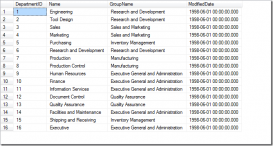最近同事反映,在使用pt-heartbeat监控主从复制延迟的过程中,如果master down掉了,则pt-heartbeat则会连接失败,但会不断重试。
重试本无可厚非,毕竟从使用者的角度来说,希望pt-heartbeat能不断重试,直到重新连接上数据库。但是,他们发现,不断的重试会带来内存的缓慢增长。
重现
环境:
pt-heartbeat v2.2.19,MySQL社区版 v5.6.31,Perl v5.10.1,RHEL 6.7,内存500M
为了避免数据库启停对pt-heartbeat内存使用率的影响,故MySQL和pt-heartbeat分别运行在不同的主机上。
运行pt-heartbeat
# pt-heartbeat --update -h 192.168.244.10 -u monitor -p monitor123 -D test --create-table
监控pt-heartbeat的内存使用率
获取pid
|
1
2
3
|
# ps -ef |grep pt-heartbeatroot 1505 1471 0 19:13 pts/0 00:00:08 perl /usr/local/bin/pt-heartbeat --update -h 192.168.244.10 -u monitor -p monitor123 -D test --create-tableroot 1563 1545 2 19:50 pts/3 00:00:00 grep pt-heartbeat |
查看该进程的内存使用率
# top -p 1505
运行了0:15.00(TIME+列),MEM一直稳定在3.3%

现关闭数据库
# service mysqld stop
刚才的pt-heartbeat命令不断输出以下信息

同样CPU时间后,MEM增长到4.4%, 增长了1%,考虑到内存500M,该进程的内存占用增加了5M,虽然不是很多,但考虑到进程的内存增加并没有停止的意思,这个现象还是要引起注意的。

同时,通过pmap命令,发现,0000000001331000地址的RSS和Dirry也会增长,增长的速率是4k/s

后来研究pt-heartbeat的源码,才发现代码有点bug
|
1
2
3
4
5
6
7
8
9
10
11
12
13
14
15
16
17
18
19
20
21
22
23
24
|
my $tries = 2;while ( !$dbh && $tries-- ) {PTDEBUG && _d($cxn_string, ' ', $user, ' ', $pass,join(', ', map { "$_=>$defaults->{$_}" } keys %$defaults ));$dbh = eval { DBI->connect($cxn_string, $user, $pass, $defaults) };if ( !$dbh && $EVAL_ERROR ) {if ( $EVAL_ERROR =~ m/locate DBD\/mysql/i ) {die "Cannot connect to MySQL because the Perl DBD::mysql module is ". "not installed or not found. Run 'perl -MDBD::mysql' to see ". "the directories that Perl searches for DBD::mysql. If ". "DBD::mysql is not installed, try:\n". " Debian/Ubuntu apt-get install libdbd-mysql-perl\n". " RHEL/CentOS yum install perl-DBD-MySQL\n". " OpenSolaris pgk install pkg:/SUNWapu13dbd-mysql\n";}elsif ( $EVAL_ERROR =~ m/not a compiled character set|character set utf8/ ) {PTDEBUG && _d('Going to try again without utf8 support');delete $defaults->{mysql_enable_utf8};}if ( !$tries ) {die $EVAL_ERROR;}}} |
以上代码摘自get_dbh函数,用于获取数据库的连接,如果获取失败,则重试1次,然后通过die函数抛异常退出。
但是,通过设置如下断点,发现当$tries为0时,if函数里面的PTDEBUG && _d("$EVAL_ERROR")语句能执行,但die函数就是没有抛出异常,并退出脚本
|
1
2
3
4
|
PTDEBUG && _d($tries);if ( !$tries ) {PTDEBUG && _d("$EVAL_ERROR"); die $EVAL_ERROR; } |
后来,将上述代码的最后一个if函数修改如下:
|
1
2
3
|
if ( !$tries ) {die "test:$EVAL_ERROR";} |
再次测试
启动数据库
# service mysqld start
执行pt-heartbeat命令
# pt-heartbeat --update -h 192.168.244.10 -u monitor -p monitor123 -D test --create-table
停止数据库
# service mysqld stop
刚才执行的pt-heartbeat命令异常退出

“test:”就是加入的测试字符。
结论
很奇怪,只是单纯的die $EVAL_ERROR不会抛出异常,并退出脚本,但修改后的die "test:$EVAL_ERROR"却会退出脚本。
很显然,这确实是个bug,不知道是不是与perl的版本有关。
很好奇,失败的连接如何导致内存的不断增长?
最后,给percona官方提了个bug
https://bugs.launchpad.net/percona-toolkit/+bug/1629164
以上所述是小编给大家介绍的当master down掉后,pt-heartbeat不断重试会导致内存缓慢增长的原因及解决办法,希望对大家有所帮助,如果大家有任何疑问欢迎给我留言,小编会及时回复大家的!












